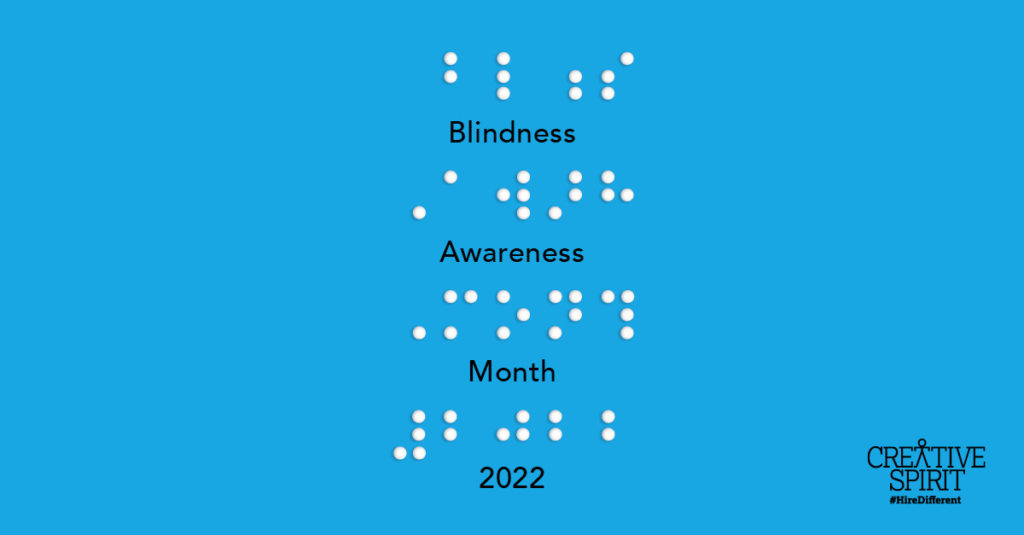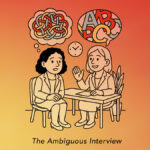By Menachem Rephun, Creative Spirit Communications Manager and Advocate

In a world designed mainly for sighted people, being blind or vision-impaired can often be a challenge. This extends to finding fair-wage employment, which is difficult for many blind people due to ableism (discrimination against people with disabilities) in the hiring process, and companies that, even in 2022, often fail to provide reasonable accommodations. According to the Centers for Disease Control (CDC), 12 million Americans 40 years old and over live with some form of vision impairment; 1 million are blind; 3 million still have vision impairment after correction, and 8 million have vision impairment due to uncorrected refractive error. Data from Census.gov (cited in a FastCompany.com report) places the number of blind Americans much higher, at around 7.5 million. Creative Spirit was founded to ensure fair-wage employment for all individuals with disabilities. For October’s Blind Awareness Month, we’ll discuss the changes that need to be implemented, and how employers can make a difference by listening to and understanding the perspectives of blind individuals.
Providing reasonable accommodations is one of the most essential factors in improving employment inclusion for blind individuals. “From past experience, I’ve found that organizations often have the right idea in mind regarding making suitable adjustments for the visually impaired, but sometimes they fail to execute it properly,” Clare Greenwood, an IT firm employee, told the Guardian in a 2012 report. “For example, one job application included screening tests, I emailed them asking for more time to complete the questions, but they only responded to my request on the day of the deadline. As a result of these things, my employment experience is a bit sketchy.” This tracks with a 2021 study by the American Foundation for the Blind, which found that blind and vision-impaired employees are held back in their job performance by employers’ lack of knowledge and commitment to digital accessibility, according to a report by Forbes.com. The 1990 Americans with Disabilities Act (ADA) was created to reduce unlawful discrimination and dramatically improve societal inclusion for people with disabilities, yet it’s clear that when it comes to fair-wage employment, many blind or vision-impaired individuals are still marginalized and left out of the conversation.
“One thing that has not changed for many people who are blind is lack of access to the workforce,” Mississippi State University Professors Michele McDonnall and Jennifer L. Cmar wrote in 2019 for Conversation.com, adding that “the large disparities in employment rates that have historically existed for people who are blind still exist today.” McDonnall and Cmar cite data from the American Community Survey (ACS), which found that 44.2% of blind people are employed and 10% are unemployed, while 77.2% of people without disabilities are employed, and only 4.8% are unemployed. As the National Center for Health Research (NCHR) explains, “Regardless of age, sex, education, and income, few blind adults receive the kinds of services that could presumably help them succeed in the workforce and remain independent and productive, such as vocational rehabilitation, occupational therapy, or visual equipment.” This lack of accommodations and accessibility is closely intertwined with negative employer attitudes and misconceptions. Between 2012 and 2017, McDonnall and Cmar conducted several studies with almost 1,000 employers. Their research uncovered some extremely important, and in some cases troubling, findings. These include the fact, when it comes to the competence and capability of blind employees in performing basic job tasks, employer knowledge is severely limited; that self-reported attitudes towards blind individuals among employers generally fall in the middle ground between highly negative and entirely positive; and that implicit attitudes of employers towards blind individuals on average are strongly negative, suggesting and that employers generally associate competence with sighted employees. On a more encouraging note, the study also found that more positive self-reported employer attitudes were connected with a greater likelihood of hiring individuals who are blind or vision-challenged. In short, shifting employer attitudes in a more positive and well-educated direction is vital to improving employment for blind individuals.
One organization working to make a difference, especially during blind awareness month, on that front is the American Foundation for the Blind (AFB), which has been addressing the needs of people who are visually impaired since 1921. The organization is heavily involved in advocacy for blind and vision-impaired individuals, promoting digital inclusion, accessible transportation, access to high-quality education, and reducing barriers to employment opportunities in a variety of ways, including by supporting efforts to pass the Transformation to Competitive Employment Act, which would phase out a sub-minimum wage for people with disabilities. A wide range of other organizations are also dedicated to helping blind individuals with employment, including National Industries for the Blind Careers; American Council of the Blind (ACB) Job Connection; Careers With Vision, and ibMilwaukeeCareers. In an article for Talera.com, visual impairment and blindness specialist Ming Wu outlined a detailed strategy for companies to improve the inclusion of blind employees. Wu divided inclusion into six categories: recruiting, accommodating, improving education on diversity and inclusion, implementing open and inclusion communication, supporting blind employees in remote work and cultivating inclusion for blind employees overall.
“In recent years, the employment rate of people with a visual impairment has been approximately 30-40% in North America, compared with 75-80% of the non-disabled population,” Wu writes. “Globally, figures vary but the trend is consistent. Therefore, the first step is to get more blind people (and the skills they can offer) into work. To enable blind people to get hired, they must first have access to the recruitment process.” She recommends that employers ensure online advertisements are accessible to blind candidates; contact nonprofits that work to find employment for people who are blind; and ask blind candidates the same interview questions as all other candidates, rather than ones relating specifically to blindness. With regard to accommodations for blind employees, Wu suggests drawing on governments and nonprofits that can offer support and advice, tax incentives, help with salaries, and funding for equipment. Of course, consulting blind or visually-challenged employees about their own individual needs and preferences is also crucial.
“You may be surprised by how few accommodations are required,” Wu points out. “Common accommodations include one-time purchases such as scanners, screen readers, magnifiers, or desk lamps. A person who is blind with no other disabilities will seldom need any major adjustments to their physical workplace, but layouts should be kept consistent and free of obstacles.” For employers who are on the fence about hiring individuals who are blind, a report from BeMyEyes.com outlines some of the benefits and advantages of hiring blind employees, including their excellent problem-solving skills; the fact that they represent an untapped talent pool; that assistive technology is becoming more mainstream; and that visual impairment in the workforce is set to rise, meaning that employers who are more inclusive of visually-challenged employees will also be more relevant.
Remote work has also created much greater accessibility for blind employees, which is something employers should be aware of. “Working with a disability is never easy,” Rachel Christian, a journalist and personal finance writer who is legally blind, wrote in an essay for Business Insider. “But the current labor market positions people impacted by vision loss to excel in a remote work world. For the millions of US adults with a vision impairment, inclusion and newfound economic opportunity may be the greatest perk of a remote work world.” Unfortunately, lack of physical accessibility is still a problem in many workplaces. In the Guardian report mentioned at the beginning of this article, IT employee Clare Greenwood recounted an incident in which she “arrived at office block, I had to make my own way to the fifth floor; there was a lift, but if the company wanted to show their commitment to disability maybe they should have sent someone down to the lobby to meet me?” As the Guardian notes, “a little effort such as this could do wonders for how disability-friendly an organization is perceived.” Through inclusion, employers can make a huge difference for millions of people who are blind or visually-challenged, improving their own businesses in the process. With advancements in technology making accessibility easier than ever, there’s no excuse for blind and visually-challenged jobseekers and employees to be left behind. More than 30 years after the passage of the ADA, it’s time for employers to step up and make its promise of inclusion and fair treatment for people with disabilities a reality.






